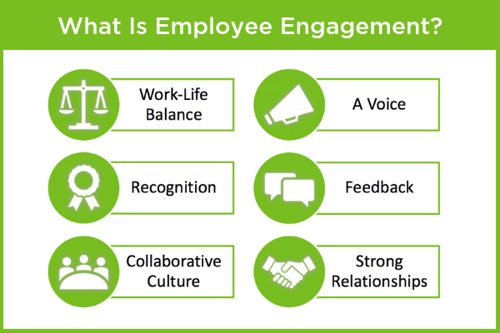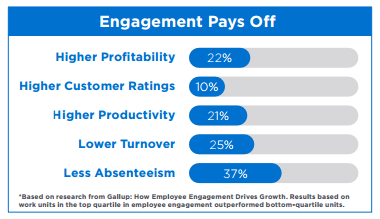December 21, 2018 | Tommy Marzella
December 21, 2018 | Tommy Marzella
 All good things must come to an end, and unfortunately, this is our last installment of our Getting Ready For 2019 blog series. But it’s okay. If you’ve been following along, I can confidently say ‘you’ve got this.’ Your organization is ready to welcome 2019, armed with the best practices needed to provide the best quality care and service, hire and retain superstars and after reading this post, make your community a top workplace.
All good things must come to an end, and unfortunately, this is our last installment of our Getting Ready For 2019 blog series. But it’s okay. If you’ve been following along, I can confidently say ‘you’ve got this.’ Your organization is ready to welcome 2019, armed with the best practices needed to provide the best quality care and service, hire and retain superstars and after reading this post, make your community a top workplace.
And with that, let’s dive right into how to make your organization a place employees want to work…and stay.

Let’s start by asking the question: What is employee engagement? Contrary to what some might think, employee engagement and employee satisfaction, while connected, are not the same thing. According to TLNT, an industry leader in HR news and insights, “Satisfaction involves personal happiness with one’s job, while engagement indicates an employee’s sense of connection and commitment to advancing organizational goals.”
So, why does employee engagement matter? Let’s look at it in terms of cost. It’s estimated that each caregiver that turns over costs an organization $2,500-$7,000. And nearly half of that turnover is occurring during the first 90 days on the job.

It's those organizations that do successfully engage and retain staff that enjoy less turnover, an increase in revenue and harder working employees.
Here are some strategies that today's top workplaces are using to create an awesome culture.
Hone In On Hiring Best-Fit Candidates
Since a good chunk of this turnover is happening during the first three months of an employee’s tenure, companies are approaching hiring with a “culture over skill” mentality. They’re looking for people that are passionate about their respective industry and have the attitude needed to succeed in the role.
Take Southwest Airlines. The multi-billion dollar company has narrowed its hiring criteria to three traits: a warrior spirit (which it describes as working hard, desiring to be the best and being courageous), a servant’s heart (putting others first and observing the golden rule) and a fun-loving attitude (being a passionate team-player).
Since implementing this criterion to drive hiring decisions, they’ve reduced their voluntary turnover rate to under 2% company-wide and their customer satisfaction rating is highest among low-cost airlines, according to a J.D. Power report.
This type of mentality is something senior care providers can easily make their own. Soft skills valuable for caregivers include being positive, warm, engaging, flexible and creative. Employers can look for these traits in interviews — and weigh them alongside education and work experience. Skills can be learned, and certifications can be obtained, but a caring attitude is something an employee either has or doesn't. And it can have a big impact on overall employee morale, as well as resident satisfaction.
Give Employees A Voice For Innovation
Want to keep your frontline staff? You must focus on creating a culture that keeps them engaged and satisfied. That starts with creating a collaborative culture that values employees’ thoughts and ideas.
Outdoor equipment company REI implemented a company campfire, where management shares their ideas and its 11,000 employees in 30 states can provide their feedback. This forum appears to be doing what the company intended it to do. Since its inception, the campfire has seen 4,500 of 11,000 employees log in at least once with the majority of posts earning up to 40 comments. It’s also worth mentioning that REI has made Fortune magazine’s 100 Best Companies To Work For every year since its inception.
How can long-term care and senior living organizations piggyback off this idea? Employees offer a wealth of knowledge since they are the ones working most closely with residents. By implementing more frequent pulse surveys, management can easily collect staff feedback to implement process improvements.
Collaborate With Employees To Build Schedules They Love
Store managers at Starbucks work with employees to create schedules that are flexible and consistent, and allow staff to trade shifts amongst themselves.
Since many of their retail employees are also working on degrees, they appreciate the flexibility and how they can adapt a work schedule that fits their lifestyle. It's no wonder that Starbucks made Indeed’s list of the 20 best companies with the best work-life balance.
Senior care organizations can benefit from offering this perk as well. While you may not be able to meet every employee scheduling request, working with your staff to create best-fit schedules can go a long way in helping them achieve their desired work-life balance. As can making it easy for them to swap shifts, pick up open shifts and request PTO.
Georgia-based Oaks Senior Living is no stranger to success. Their a family-operated, top-rated provider and were named a 2018 Best Of Assisted Living winner by SeniorAdvisor.com. Here’s are their tips for attracting, engaging and retaining staff.
1. Hire & Onboard With A Purpose
Oaks Senior Living uses selective hiring assessments to make sure applicants are the right fit and align with their organizational values. They also incorporate current team members in interviews and have applicants shadow mentors to get a sense of their bedside manner and ability to work well with others.
2. Keep Employees In The Loop
Utilize messaging to keep employees informed and engaged. Oaks Senior Living uses messaging to alert employees about open shifts, for crisis management, to reward and recognize and more.
Andrew Greeson, Director of Operations, Oaks Senior Living explains, "OnShift has really helped us with is when we have staff call out, it's easy to send out a message through the OnShift app where staff are able to respond quickly and we're able to get those shifts covered."
3. Reward & Recognize
Oaks Senior Living uses a kudos board to give a shout out to those employees that go above and beyond. The board is visible in the community for all to see - fellow staff members and residents alike. Employees' names are displayed as acorns on an oak tree for all to see. They also distribute rewards like tickets to local sporting events, gift cards and Amazon Prime memberships.
4. Collect Staff Feedback & Monitor Satisfaction
Using the pulse surveys in OnShift Engage, Oaks Senior Living is able to keep tabs on employee satisfaction to correct small issues before they become larger problems. They also collect feedback via an optional comment section on the surveys, which have led to many process improvements.
"We need make sure our staff knows that we're listening to them. Whenever we get a response, we make it a practice to always respond back to find out a little more information. It shows 'we care about what you say and want to know what you're experiencing on a day-to-day basis,'" Greeson says.
Subscribe to the OnShift Blog
Recent Posts
Categories
About Tommy Marzella
Tommy Marzella is a Portfolio Marketing Manager for OnShift.
See for yourself why thousands of providers rely on OnShift’s innovative software for recruitment, hiring, workforce management, pay and engagement. Request your personalized demo today.
